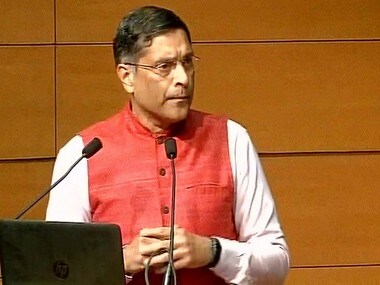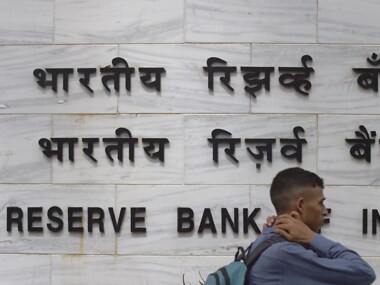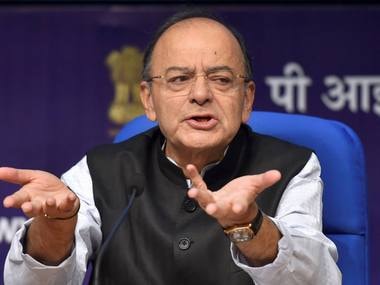So the will-he-won’t-he suspense about whether Finance Minister Arun Jaitley will announce a pause in the steady movement on fiscal consolidation that this government has undoubtedly been making is over. There is going to be fiscal slippage. No less than the Economic Survey 2017-18 tabled in Parliament on Monday indicates that. “Reflecting largely fiscal developments at the center, a pause in general government fiscal consolidation relative to 2016-17 cannot be ruled out,” the Survey says.
There was a certain inevitability about this in most circles (Rathin Roy, director and CEO of the National Institute of Public Finance and Policy (NIPFP) being one exception, as this interview indicates). But what may perhaps disturb even those who felt a slight slippage this year is warranted, is the Survey’s prognosis for the next fiscal – the return to the fiscal straight and narrow may not happen.
Admitting that such a return was necessary to establish credibility after this year’s missed target as well as the better growth outlook and renewed price pressures, the Survey warns: “However, setting overly ambitious targets for consolidation—especially in a pre-election year—based on optimistic forecasts that carry a high risk of not being realized will not garner credibility either.” The best one can hope for is “a modest consolidation that credibly signals a return to the path of gradual but steady fiscal deficit reductions.”
Now all that remains to be seen is how Jaitley uses the fiscal elbow room that he appears likely to carve out for himself. His boss – Prime Minister Narendra Modi – appeared to indicate in a recent television interview that the Budget will eschew populism because people were not interested in freebies and sops. But with an election to win, can his government really go for a non-populist Budget?
The Survey, which is quite realistic in its growth forecasts and frank about the challenges before the economy, indicated three key areas of concern: education, employment and agriculture. If the Survey is an accurate harbinger of what the Budget holds, then these could be the focus of Jaitley’s last Budget. But is it necessary to loosen the purse strings rather generously to address issues in these areas?
Box 3 in the first chapter of the Survey – something Chief Economic Advisor Arvind Subramanian, the author of the survey drew attention to at his press conference – is on the Rs 6,000 crore package for the apparel sector announced in June 2016. Most of it was in the form of tax sops.
The Survey shows that apparel exports rose sharply relative to other sectors which did not get these concessions. This would have given a boost to employment in this sector as well. It will be interesting to see if this approach will be used to boost other labour-intensive and export-oriented sectors. After all, the Survey does, in the context of the employment challenge, talk about “creating a climate for rapid economic growth on the strength of the only two truly sustainable engines—private investment and exports”. Indeed, at his press conference, Subramanian noted that the textile package had worked and this could perhaps be extended to other sectors.
What, then, of agriculture, another area of concern? The Survey sounds a note of caution in the short term – a 6.1 percent fall in the acreage for kharif and 0.5 percent in the case of rabi for 2017-18, price pressures in pulses, oilseeds as well as perishables and wage deceleration – as well as the long-term in the form of the adverse effects of climate change (it might reduce farm incomes by 20-25 percent). But this is one area where, perhaps, merely throwing more money (especially in the form of input/product subsidies or freebies) may not help a great deal.
The laundry list of the supportive policies that agriculture revival needs is pretty well-known now. These things now need to be done. The Survey talks about how the GST Council has set a wonderful example of cooperative federalism and how this model can be used in a range of other areas, including agricultural marketing reforms. And, as both NITI Aayog member Ramesh Chand and agricultural economist Ashok Gulati told Firstpost in the Budget and Beyond series, it is time to get states to come on board on this issue. Sure, a spike in allocation for agriculture is inevitable, but the key will be what form this infusion of money takes.
Boosting agriculture, Subramanian indicated, could be part of a twin-pronged effort (along with measures for overall economic revival) to address the employment challenge.
As for other measures to pep up the economy, the Survey talks about things that may not require more government spending. Two of these are stabilising the GST (Subramanian indicated that we may get a single rate in three to five years) and moving forward on addressing the twin balancesheet challenge. The GST revenues, the Survey indicates, are more buoyant than were expected – that’s quite remarkable for the very first year of this disruptive reform.
With a healthy percent increase in taxpayers after both demonetisation and GST, as the Survey indicates, this should be a good source of revenue in the coming fiscal. The sale of Air India, which too the Survey makes a strong case for, should add to the revenues on the non-tax front. So it should be possible for the Budget to not stray from the fiscal glide path at least in the next fiscal. It would be a pity if it did.
Click here for full coverage of Union Budget 2018
(The writer tweets @soorpanakha)
Published Date: Jan 30, 2018 07:46 AM | Updated Date: Jan 30, 2018 07:59 AM




















